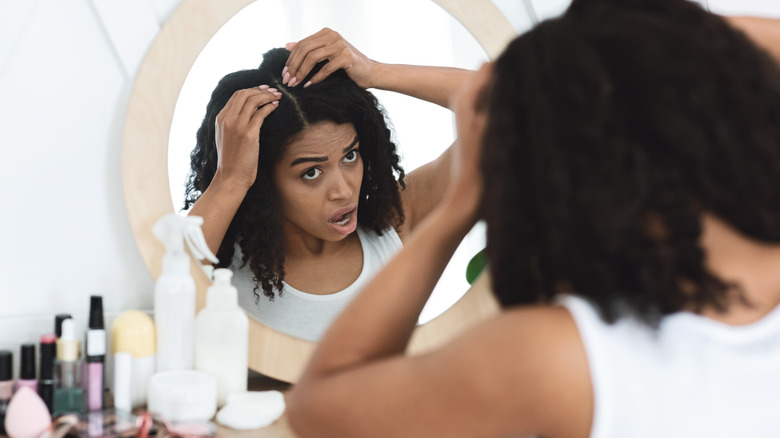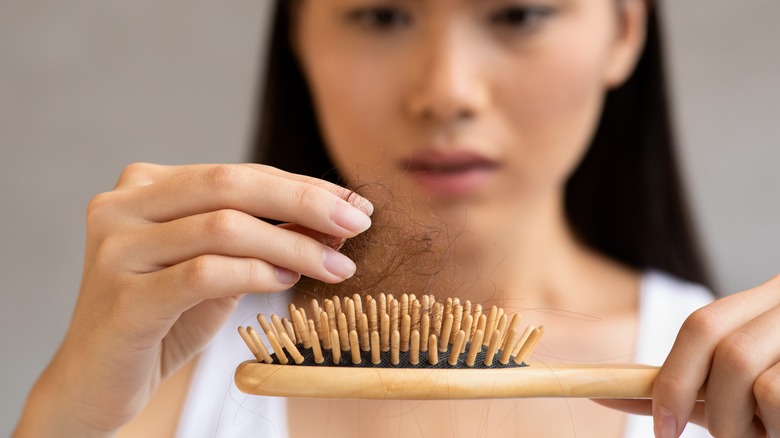Can Wearing Your Hair In A Ponytail Cause Hair Loss?
For thousands of years — and throughout many cultures — humans have been in pursuit of beautiful hair. Whether we adorn our locks with beads, tie it tightly back in an elegant bun, or sport goddess-like braids that hang down our backs, having well-kept hair continues to be a point of pride for many across the globe. And while many people have made these hairstyles a part of their signature look, these do's could be contributing to hair loss.
We generally think of hair loss as a men's issue, but Cleveland Clinic reports that nearly half of all women will experience noticeable hair loss. Hair loss in women is most commonly caused by Female Pattern Hair Loss. However other conditions, like alopecia, can also be the culprit of thinning hair. While alopecia is an autoimmune disorder that causes the body to attack healthy hair follicles, traction alopecia — on the other hand — is a type of hair loss that occurs when hair has been repeatedly pulled in the same way for an extended period of time (per Medical News Today).
Causes and symptoms of traction alopecia
Whether a high pony is a part of your signature look (much like Ariana Grande) or a requirement for work, many women pull their hair back in the same way day after day. Many others still keep their hair in braids or dreadlocks as a way to prevent breakage and keep hair well nourished. However — well-intentioned as these hairstyles may be — using them too much can put a strain on your delicate hair follicles and quite literally pull your hair out. Traction alopecia can be caused by pulling hair back too tightly, wearing braids, extensions, or weaves, sleeping in curlers, or overusing headwear or hair accessories (per Healthline).
People who experience traction alopecia may begin to notice a receding hairline, loss of hair around the temples, or at the nape of the neck (per Medical News Today). There may also be a noticeable widening of the hair part. In some cases, redness, itching, ulcers, and small pimples may appear on the scalp. In more progressed cases, the skin where hair has been lost may appear shiny and scarred.
Treatment and prevention
Hair loss caused by traction alopecia can be jarring, but — if caught in time — it is usually reversible. If you're experiencing hair loss from traction alopecia, the American Academy of Dermatology Association recommends changing up your hairstyle for a while. By avoiding tying your hair up in a ponytail or by taking a few months away from cornrows to let your hair be natural, you can allow your scalp enough time to heal and for new growth to emerge. If keeping your hair out isn't an option for any reason, tying it back loosely can reduce the amount of strain you put on your hair follicles.
When wearing a weave, it's important that you only wear it for short amounts of time. Sewn-in weaves are also better at preventing hair loss than ones that require glue or clips. When getting hair braided, Healthline also recommends opting for larger braids, as smaller ones require tighter braiding and put more stress on the scalp. Chemical relaxers should also be avoided if possible.



